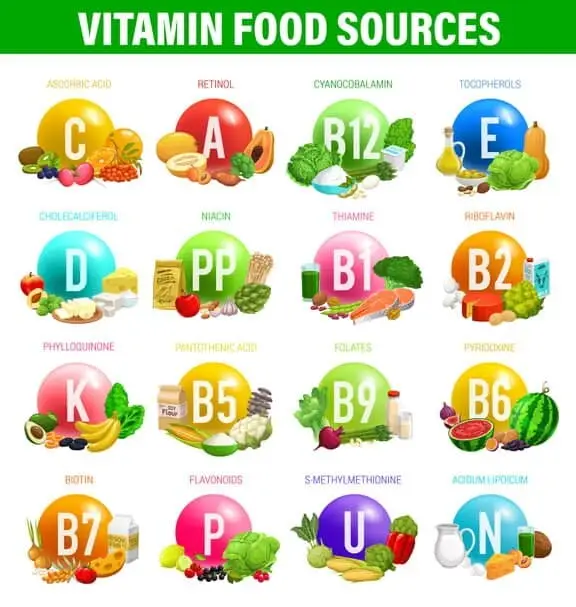The Role of Micronutrients in Overall Health and Wellness

Introduction
Micronutrients, though needed in small quantities, play powerful roles in human health and wellness. These essential nutrients, encompassing vitamins and minerals, are pivotal for various bodily functions, from energy production and immune function to bone health and neurological processes[^1^]. Among the myriad sources of these micronutrients, one food group stands out for its impressive nutrient density – microgreens.
Understanding Micronutrients
Micronutrients are distinct from macronutrients, namely, fats, proteins, and carbohydrates, which constitute the bulk of our diets. While macronutrients provide the energy our bodies need to function, micronutrients ensure the body can effectively use that energy and execute numerous other vital tasks[^2^]. Micronutrients are divided into two groups: vitamins, which are organic compounds, and minerals, which are inorganic. Essential vitamins include A, C, D, E, K, and B vitamins, whereas vital minerals encompass calcium, potassium, iron, and zinc[^3^].
The Role of Micronutrients in Health and Wellness
- Energy Production: B vitamins are instrumental in energy metabolism. Acting as coenzymes, they assist enzymes in converting carbohydrates, fats, and proteins into glucose, which the body utilizes for energy[^4^].
- Immune Function: Numerous micronutrients, including Vitamin C, Vitamin D, zinc, selenium, iron, and Vitamin A, help maintain the integrity of the immune system and protect against infections[^5^].
- Bone Health: Calcium, Vitamin D, and phosphorus are crucial for bone health. Calcium and phosphorus provide strength and structure to bones and teeth, while Vitamin D facilitates the body’s absorption of calcium[^6^].
- Neurological Function: Micronutrients like B vitamins, magnesium, and omega-3 fatty acids play vital roles in brain health. They contribute to neurotransmitter synthesis, nerve function, and the maintenance of the brain’s structural integrity[^7^].
Microgreens and Their Contribution to Micronutrient Intake
Microgreens, the young seedlings of edible vegetables and herbs harvested at the cotyledon leaf stage, have gained recognition for their superior nutrient density. Research suggests that microgreens often contain higher concentrations of vitamins and minerals compared to their mature counterparts[^8^]. For instance, red cabbage microgreens have been found to possess 6 times more vitamin C and 69 times more vitamin K than mature red cabbage[^9^].
The exact nutrient content can vary between different types of microgreens. However, many varieties are rich in vitamin C, E, K, and beta-carotene. Including a variety of microgreens in the diet can thus help meet the recommended intake of these crucial micronutrients[^8^].
Micronutrient Deficiencies and Their Impact on Health
Micronutrient deficiencies can have severe health consequences. Vitamin A deficiency can lead to vision problems, vitamin D deficiency can cause bone deformities, iron deficiency can result in anemia, and iodine deficiency can give rise to thyroid issues[^10^].
Ensuring Adequate Micronutrient Intake
A balanced diet rich in fruits, vegetables, whole grains, lean proteins, and healthy fats should provide all the necessary micronutrients. Incorporating microgreens into meals is an excellent strategy to boost micronutrient intake. Nevertheless, certain populations may be at risk for deficiencies, such as pregnant women, older adults, vegetarians, vegans, and individuals with certain medical conditions[^11^]. In these cases, fortified foods or dietary supplements might be necessary under the guidance of a healthcare provider.
Popular sources of Micronutrients
- Leafy Green Vegetables: Microgreens such as kale, spinach, and arugula are rich in vitamins A, C, K, and many B vitamins. They also contain minerals like calcium, iron, magnesium, and potassium.
- Bell Peppers: These are an excellent source of vitamins A and C.
- Citrus Fruits: Oranges, lemons, limes, and grapefruits are all high in vitamin C.
- Nuts and Seeds: Almonds, flaxseeds, and chia seeds provide vitamin E, magnesium, and omega-3 fatty acids.
- Whole Grains: Foods like brown rice, quinoa, and oats are high in B vitamins and minerals such as iron, magnesium, and selenium.
- Legumes: Lentils, chickpeas, and black beans provide B vitamins, iron, magnesium, potassium, and zinc.
- Broccoli Microgreens: These are high in vitamins A, C, and K, as well as folate.
- Red Cabbage Microgreens: They are high in vitamins C, K, and E.
- Sunflower Microgreens: These provide a good source of zinc and selenium, and they’re high in vitamin E.
- Fish: Salmon and other fatty fish are high in omega-3 fatty acids and vitamin D.
- Eggs: They are a good source of B vitamins, vitamins A and D, and minerals like zinc and selenium.
- Dairy Products: Milk, cheese, and yogurt are high in calcium and vitamin D.
- Meat: Red meat and poultry are high in B vitamins, zinc, and iron.
- Shellfish and Oysters: These are excellent sources of zinc.
- Dark Chocolate: It’s high in iron, magnesium, and manganese.
Remember that a varied diet is the best way to ensure you’re getting a wide range of micronutrients. It’s always recommended to talk with a healthcare provider or a nutritionist before making significant changes to your diet, especially if you have any health conditions or specific dietary needs.
Conclusion
Micronutrients, though needed in small quantities, are vital for our overall health and wellness. They support a myriad of bodily functions and processes that underpin our daily activities and long-term health. Microgreens have emerged as an excellent source of these essential nutrients. While a balanced, varied diet is the best way to ensure adequate micronutrient intake, certain populations may need additional support through fortified foods or dietary supplements. As always, any dietary changes should be made in consultation with a healthcare provider.
- MedlinePlus. (2021). Nutrition.
- Harvard T.H. Chan School of Public Health. (2021). Vitamins and Minerals.
- Maggini, S., Pierre, A., & Calder, P. C. (2018). Immune Function and Micronutrient Requirements Change over the Life Course. Nutrients, 10(10), 1531.
- National Institutes of Health. (2021). Calcium and Vitamin D: Important at Every Age.
- Benton, D., Donohoe, R., Clayton, D., & Long, S. (2013). Supplementation with DHA and the psychological functioning of young adults. British Journal of Nutrition, 109(1), 155–161.
- Xiao, Z., Lester, G. E., Luo, Y., & Wang, Q. (2012). Assessment of Vitamin and Carotenoid Concentrations of Emerging Food Products: Edible Microgreens. Journal of Agricultural and Food Chemistry, 60(31), 7644–7651.
- Pinto, E., Almeida, A. A., Aguiar, A. A., & Ferreira, I. M. (2015). Comparison of the Vitamin C and Folate Contents in Microgreens and Mature Lettuces, Spinach, and Red Cabbage. Journal of Food Composition and Analysis, 37, 38–43.
- World Health Organization. (2021). Micronutrient deficiencies.
- Muthayya, S., Rah, J. H., Sugimoto, J. D., Roos, F. F., Kraemer, K., & Black, R. E. (2013). The global hidden hunger indices and maps: an advocacy tool for action. PLoS ONE, 8(6), e67860.
- Oregon State University. (2021). Micronutrient Information Center.
Disclaimer
The information provided in this article is for educational and informational purposes only and is not intended as medical advice. It is not a substitute for professional medical advice, diagnosis, or treatment. Always seek the advice of a qualified healthcare provider with any questions you may have regarding a medical condition. The author and publisher of this article are not responsible for any adverse effects or consequences resulting from the use of any suggestions, preparations, or procedures described in this article.


